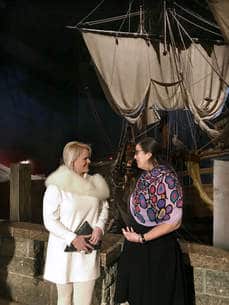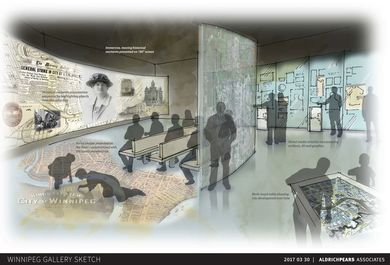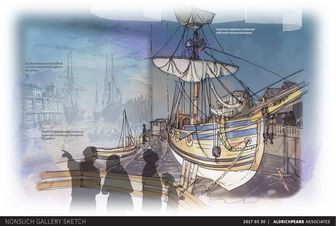Claudette Leclerc: This image captures the three-step Capital Renewal Vision of the Manitoba Museum as it was envisioned in 2009 as result of extensive community consultations.
CL: Yes, our expanded and renewed Alloway Hall opened in March 2017 and has already hosted our massive Manitoba Day celebrations, a number of special and travelling Canada 150 exhibitions, as well as the World’s Giant Dinosaurs exhibition, while also providing a rentals space for corporate events.
CL: Thank you. We’ve balanced our budget for 25 years, and we’re the first museum in Canada to be accredited by Imagine Canada.
CL: What we heard – and what we already knew – was that after nearly 50 years, the Museum Galleries are tired and the Manitoba story needs to be updated. We have 56,000 square feet of gallery space and its very costly to keep them up to date.We also learned that Manitobans are really interested in science. One-third of our attendees come to the Science Gallery and its only 6,000 sq feet. We would like to establish a stand-alone Science Centre that celebrates the science-based innovative industries of this province.
JH: This was the first museum I visited as a high school international exchange student. I felt the whole history of Manitoba really came alive. I remember walking through and being surrounded by the history – the city, immersed in the First Nations history – it was really powerful.
CL: Indigenous people had a very successful society before Europeans arrived, and we want to do a better job of connecting with that past. Step 2 of our Renewal project, Bringing Our Stories Forward, will help us tell those stories better, and we want to tell the contemporary story of Indigenous people too.
JH: It just feels like it is about time the Indigenous story gets updated from all kinds of different parts of society. I’m glad you are taking the lead on that – providing a proper stage so people ‘get it.’
Which is the first Gallery slated for renewal?
CL: The first gallery we’re going to renew as part of the Stories Project is the Nonsuch Gallery. We’re turning the story around so that instead of the Nonsuch leaving Deptford England, the ship has just arrived back from Hudson Bay so the sailors can share stories of meeting and trading with Indigenous people.
JH: It’s amazing how the smell of the ship takes you back.
CL: Yes, and we will ensure that the senses are engage with scent, sounds and visuals using interactive digital media to help tell the stories of the sailors returning from the New World. The gallery will be closing January and reopening in June.
CL: We’re on a schedule to complete the entire Renewal project in time for 2020 when the Hudson`s Bay Company celebrates 350, and this coincides with Manitoba’s 150 and the Museum’s 50th anniversary. It makes sense that we complete our renewal in time for these anniversaries. It’s a huge job.
CL: Next up will be the Winnipeg Gallery which has two parts. Winnipeg is such an interesting and dynamic city. The Winnipeg Gallery will tell the story of Winnipeg as a meeting place and settlement for thousands of years. We will tell more contemporary stories with an immersive multi-media environment, and in the Urban Gallery we’ll have new approaches to storytelling while still placing authentic artifacts at the core of the experience.
CL: That’s right. It was always meant to be Winnipeg 1920 but the space has bit of an abandoned feel. We want to enliven it with people sounds, projections, audio – so it feels populated. We also want to include the women’s right to vote story, as well as the Winnipeg General Strike.
CL: The Grasslands Gallery opened in 1971 and while some exhibits have been renewed the entire 6,000 sq foot gallery is under review. While some exhibits like the log cabin and tipi will stay with enhanced interpretation, there will be many changes in this area. We have a lot of research and community consultation to complete over the next two years, talking with Indigenous communities and updating the immigration story.
CL: Yes and we’re consulting with those groups to find ways to bring their stories into the Museum. With over 300,000 visitors and 80,000 student visits we have a diverse community to connect with.
CL: Thank you. The Museum is a real jewel in our community and we hope it`s been a place of pride. With updating the Museum and the stories we tell, we can build more pride, especially with the Indigenous community and newcomers who can see their stories reflected here.
CL: Thank you Johanna, I think that sums it up really well.







